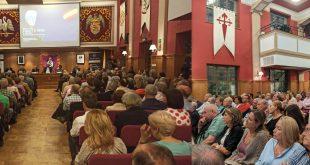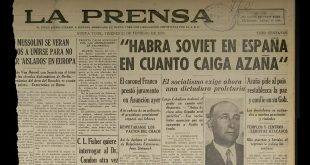In the 1970s critics held that formation of historically continuous Spanish institutions in the kingdom of Asturias during the generation immediately following the Muslim conquest involved a major paradox. The most succinct statement of this position was made by Abilio Barbero and Marcelo Vigil in the small study they published in 1974, Sobre los orígenes sociales de la Reconquista. This work appeared on the eve of the democratization of Spain, and for this particular topic represented a climax of the deconstructive trend of interpretation of Spanish history which had begun in the late nineteenth century. It posited a paradox, not to say contradiction, in the origins of the resistance nucleus of Asturias during approximately the second quarter of the eighth century.
The paradox was supposed to be two-fold. On the one hand, independent Hispano-Christian society first arose in what was heretofore the least Romanized and Christianized part of the peninsula, with the exception of the Basque region. On the other, the «neo-Gothic ideal» which emerged as a kind of political doctrine among the Asturian elite by the late ninth century was held to have had the scantiest basis in Asturias itself, for the greater Asturian-Cantabrian region, as putatively one of the least Romanized districts, was said to have possessed little or no Visigothic political structure or identity. Instead, it was allegedly the home of semi-primitive autochthonous peoples, whose society was scarcely more than tribal in structure, and who had had little to do with the Visigothic state at all, having never been effectively conquered or integrated by it.
Though some historians rejected this general interpretation, or at least the most extreme statements of it, it came to be widely held after the death of Franco, fitting very nicely the mood of diversity and pluralism which dominated the years of the Spanish democratization. During this era the Grand Narrative of Spanish history, which found its earliest expression in the Asturias of Alfonso el Casto and reached its heights in nineteenth-century Spanish nationalism—both liberal and Catholic—and in the doctrines of the Franco regime, was rejected politically and broadly deconstructed historiographically. Moreover, this reinterpretation could not easily be challenged by new historical research, for the sources on the last years of Visigothic history are the weakest of the entire Visigothic period, while the principal documentary materials for the history of the kingdom of Asturias consist of only three chronicles.
First, however, any reexamination of the roots of Asturian history must also be studied in the light of the Visigothic state which preceded it. For nearly a hundred years, the latter had been viewed by most commentators as a semi-incoherent failure, whose sudden downfall merely reflected its internal social and political divisions and general decadence, so that its ruin become almost inevitable. The achievements and influence of its cultural super-star, San Isidoro of Seville, were seen as a unique exception which otherwise merely proved the rule. More recently, however, historians have viewed such an attitude as having its origins, at least in part, in noventayochista concepts and in the cultural pessimism of Spain at the close of the nineteenth century.
For most of the twentieth century, the Visigothic state was given credit for establishing its sovereignty over most of the peninsula and for recognizing official Catholic orthodoxy, but for little else. The Grand Narrative had given it credit for establishing the unity of Spain politically and religiously, but the tendency among twentieth-century historians was to see it as a decadent failure in social, cultural and spiritual terms. Disparagement of the Visigothic era was not new, of course. This had been begun by the French Carolingians as early as the end of the eighth century, the Carolingians being the first to propagate the myth that Roman culture had been almost totally submerged by «barbarian invasions,» introducing the concept, if not quite the term, of «dark ages» overtaking western Europe after the collapse of Rome. The Merovingian world was dismissed as aimlessly violent and hopelessly ignorant, and for most of the twentieth century this same attitude had been extended to the Visigoths, as well.
Research on the Visigoths enjoys a venerable tradition in Spain, and for long centered on the history of law, on the one hand, and of church history and patristics, on the other. In 1941, two years after the Civil War, the young historian Alfonso García Gallo published a major one hundred-page article in the first new number of the prestigious Anuario Histórico del Derecho Español which challenged the traditional understanding of the basis of Visigothic law. The major figures in this field, led by Eduardo de Hinojosa and later by Claudio Sánchez Albornoz, had emphasized the centrality of Germanic law, whereas García Gallo argued on the basis of considerable evidence that, in general, what was known in western Europe as «Roman vulgar law» was more nearly the basis of Visigothic law codes.
The Visigoths had long been recognized as the most Romanized of the Germanic peoples, but García Gallo’s reinterpretation considerably broadened understanding of the post-Roman character of certain Visigothic institutions, and to some degree has been substantiated by subsequent research. Moreover, coming as it did during the high triumphal phase of the primer franquismo, it accorded nicely with the dominant political ideology, which was pleased to alter the origins of the conventional Grand Narrative in a more directly Romano-Hispanic southwest European, less Germanic direction. The fact that the most recent research in Germany itself had underscored the persistence of Roman vulgar law in the various Germanic kingdoms only gave this greater credibility. At that stage the regime encouraged the friendliest of relations with Nazi Germany, but preferred a less Germanized version of the national Grand Narrative. In subsequent decades, much of Spanish research on the Visigoths followed this same channel, though the priest and professor José Orlandis, the leading specialist of the second half of the twentieth century in this area, emphasized especially church history and church law.
A more positive reevaluation of the Visigothic kingdom has, however, taken place in the last two decades of the century, most notably among non-Spanish scholars. The able British Hispanist Roger Collins came to accuse scholars in the field of what he termed «virtually a ‘slave-mentality,’ induced by a priori acceptance of the necessary inferiority of Visigothic Spain.» A significant role has been played by the noted French Hispanist Jacques Fontaine, the leading living authority on Isidoro, though perhaps one of its first manifestations was the international conference on «Visigothic Spain: New Approaches,» held at University College, Dublin, in 1975. This reevaluation gives the Visigoths credit for «holding together for over a century the largest undivided political unit in seventh-century Europe,» for having extended political organization rather more thoroughly across the peninsula’s north than had earlier been thought, for building some degree of politico-administrative structure and for having expelled the Byzantine invaders. It is now generally recognized that Visigothic Spain maintained a higher level of learning and culture than any other large part of western Europe except for areas in Italy, and that the Visigothic clergy was generally the besteducated to be found in continental western Europe, however relative such a qualification must be. The seventh-century legal codification of Recesvinto, known variously as Forum Iudicum and Liber Iudiciorum, and to medieval Castilians as the Fuero Juzgo, was the most extensive and relatively sophisticated western law code of its time, and in various ways was followed in all the Visigothic successor states—even in Catalonia—for some six centuries.
The close association between church and state that existed from the late sixth century has long been emphasized, and earlier gave rise to erroneous judgments by foreign scholars about the roots of what was termed «Spanish theocracy.» That relationship was in fact rather more caesaropapist than theocratic, but there is no doubt that the church came to have a major role in the late Visigothic system, in a manner distinct from that of the church in any other contemporary state. It did indeed have an important political and, later, administrative function, and the Councils of Toledo involved the church in formulating a primitive kind of constitutional law, though the latter was often honored only in the breach.
San Isidoro has long been recognized as the great western polymath of his age, and indeed was the most influential Spanish scholar of all time. His Etymologies were still being laboriously copied out by hand seven centuries later. Though not a major theologian, he was the last great patristic figure of Late Antiquity. Isidoro played a crucial political and ideological role as well, for he was the first to define fully the terms of the achieved «an rigina new «Christian monarchy,» an «empire»—meaning a totally independent state– not beholden either to old Rome or to the Eastern Roman empire. In the Isidorean doctrine, the Visigothic monarchy represented a new kind of state and culture that sought, though it failed to achieve, a sort of synthesis of western Christianity and classical culture, the latter of course subordinated to the former. He spoke of the new kingdom as the «patria» of «the peoples of all Hispania» now joined in the single «patria of the Goths.»
Jacques Fontaine has labeled this «the genesis of the Hispano-Gothic ideology,» resulting in «a kind of cultural nationalism.» Isidoro’s approach differed from that of his papal quasi-contemporary, Pope Gregory the Great, in that it was optimistic, whereas that of Gregory had been eschatological. Gregory had been relatively suspicious of profane culture, whereas Isidoro sought to incorporate it as much as possible, seeking a via media between yesterday and today. Fontaine claims, perhaps with a little exaggeration, that he original and firm vision of universal history,» in which the Christian monarchy followed Rome in a positive line of historical development. This «Regnum Gothorum» was itself a precisely defined territory, in fact the first Christian and European state to be exactly defined geographically. None of its contemporaries had such clear definition, either in doctrine or in territory.
One of the most contested points in interpreting late Visigothic society is the issue of ethnic integration. It was for long assumed that one of the basic weaknesses of Visigothic society lay in the continuing division between Germanic Visigoths on the one hand and Hispano-Romans or other native population on the other. Some non-Spanish specialists during the past generation have come to discount this, seeing instead a broad fusion of elites, and perhaps of much of the ordinary population as well, after the ban on intermarriage was ended in the sixth century. The Fourth Council of Toledo in 633 referred to the population of the kingdom as part of a single «gens et patria,» just as the Seventh Council, thirteen years later, spoke of the kingdom as a whole as the «gens et patria Gothorum.» After this there are no further references to a distinct «Roman» population. The Gothic language itself ceased to be used, even by the highest Visigothic elite, though the majority of children for whom there is any record, even from more ordinary families, were given Gothic names.
This newer conclusion does not presume any sort of homogenization, much less any strong sense of harmony in society at large. Not only did the Visigothic high aristocracy maintain control of power, but by the late seventh century ordinary social tensions seem to have been increasing. Slavery persisted, there was more frequent complaint than ever about numerous runaway slaves, and severe economic pressure heightened pressures toward forms of enserfment for part of the free rural population. Specialists in Spain remain even more impressed by the severe internal problems, and more skeptical concerning the degree of ethnic fusion. This remains at best an open question, and one difficult to resolve due to the paucity of evidence.
Américo Castro entitled one brief section of his magnum opus «Los visigodos no eran españoles,» and in the fullest sense this is doubtless correct, but they did create the first political «Spain,» and at least began the process of forming a specific Spanish society, even though that process was not complete by 700. Moreover, the Visigothic form of elite society—the military aristocracy—would remain the dominant elite form of Spain for the next millennium.The great failure of the Visigothic state was political, for dissidence among the elite aristocratic families could rarely be controlled for more than a decade or so at a time. The efforts by church leaders and others to «constitutionalize» the succession to the crown, creating the most elaborate succession mechanism of any Christian state at that time, failed. Consequently the key to the Islamic conquest—part of which was not technically a military «conquest»– lay in the conditions of civil war which reappeared in 710-11. A century and a half earlier, in 554, one Visigothic faction which claimed the throne had called in Byzantine military assistance, leading in turn to the Byzantine occupation of the whole southeastern part of the peninsula for three-quarters of a century before it was reconquered. The next reconquest would take much longer.
The Arab takeover of Spain was proportionately the fastest and most mysterious of all the extensive Islamic conquests of that era. Major parts of less developed North Africa resisted for decades before they finally succumbed. Later, other western kingdoms, such as those of the Merovingian French in the 730s or the Anglo-Saxons in 1066, would resist more vigorously, though the latter was also overwhelmed by the Normans. The key presumably lay in the suicidal rivalries within the Visigothic elite. Once one faction of the latter was dislodged by defeat in two battles, most of the kingdom collapsed politically without further central resistance, thanks in part to the swift initiative of the new Arab leadership, just as would later be the case within the more centralized and more unified and sophisticated Anglo-Saxon state after defeat in the Battle of Hastings. Earlier protracted North African resistance had been partly predicated on decentralization.
As indicated earlier, some twentieth-century historians have tended to view the onlysuccessful resistance nucleus emerging in Asturias as something of a spastic knee-jerk reaction by an early medieval variant of Hobsbawmian «primitive rebels.» This approach has been called the «indigenist theory» of the origins of the kingdom of Asturians. Crude tribesmen who had supposedly never bowed the knee to the Visigoths soon took up resistance to the Arabs, but the only continuity was local and rather primitive, the people of Asturias exhibiting no very sophisticated political, social, religious or ideological features, as summarized in the work of Barbero and Vigil.
Since the publication of that book, northern Spain has been the object of the most extensive archeological research the region has ever known. Beginning with the first major new research project initiated in Asturias in 1980, a new golden age of archeological research has opened, that soon began to yield a rather different picture. Some of the results have been presented most cogently in the analytic synthesis published in 2001 by Luis Ramón Menéndez Bueyes, Reflexiones críticas sobre el origen del Reino de Asturias. Recent archeological research has revealed a greater degree of Romanization and of apparent economic integration than had earlier been thought to be the case. Particularly in Asturias, though not so much in Cantabria proper, the structure of much of society, together with its economic organization, turns out not to have differed so much as frequently had been assumed. There is at least some evidence of relative political integration, as well. The tentative new conclusion is that, though the Asturias was not so heavily Romanized as the major areas of the south and east, the region revealed more sophisticated structure and greater political integration in Visigothic times than had earlier been thought.
The revisionist interpretation, conversely, finds considerable evidence of incorporation of all the north, with the intermittent exception of the Basque territory, in the Visigothic system, involving a more complex social structure, greater Christian identity and some degree of greater cultural sophistication. It concludes that there seem to have been three Visigothic duchies in the north—roughly Galicia, Asturias and Cantabria—parts of which, at least, provided the structure for leading and waging a successful revolt. One factor that all agree upon, of course, is the importance of geography, which made the mountains of the northwest the most difficult and remote terrain for foreign conquerors to deal with. On the opposite side of the Islamic world mountain ranges also turned back Arab conquerors. Six centuries later, the Spanish would face a similar problem in the opposite corner of the peninsula, where the conquest of Granada would constitute the longest, slowest and most costly phase of the Christian reconquest.
The conundrum of the initiation of serious Christian resistance in the least Christianized part of the peninsula is scant problem for the revisionist interpretation, which finds more Christian structure there to begin with. Whatever Christian identity already existed was quickly reinforced by the beginning of what would become several waves of emigration of Christians from Al-Andalus to the north, a process recognized by all historians, which would continue intermittently for four centuries, add considerable density to the northern population, and probably a good deal more to its religious identity and intensity. There is even limited evidence of the immigration of North African Christians, as well. All this makes it rather less surprising that within a generation the resistance nucleus organized itself into a monarchy, that it soon developed contacts with other parts of western Europe, and that it also developed a firm spirit, at least among the elites, of orthodox Roman Catholic religious identity, as this was understood in the late eighth century.
What remains quite controversial, however, is the precise role and weight of sectors of the old Visigothic elite and of ethnic Visigoths or semi-Visigoths in this process. That they played a role of some importance is fairly obvious, but the old «Germanic thesis» held by historians of the late nineteenth and early twentieth century, which postulated an unusually heavy concentration of Visigoths in part of Old Castile prior to the Arab conquest, was seriously challenged during roughly the third quarter of the twentieth century.
A different approach has been taken by Armando Besga Marroquín, who does not argue for any especial prior presence of Visigoths in the north, but rather, as is tersely indicated in one of the chronicles, that a significant number of them soon moved or emigrated to Asturias to form a resistance nucleus, giving the early kingdom a heavily Gothic character. We have no evidence that what Sánchez Albornoz would define as the ideology of neogoticismo— so fundamental for subsequent Spanish doctrine and the eventual Grand Narrative—before the ninth century, and no historian would maintain that Asturias represented any sort of direct continuity of the old Visigothic order. The kingdom of Asturias was a completely new creation, and the exact ethnic balance among its founders is something that can probably never be determined. Nonetheless, the arguments of Besga Marroquín and others who emphasize the direct Visigothic influences in political and religious affairs, as in culture, cannot be very easily dismissed.
Whereas the Visigothic state, with its broad territorial domain, crumbled, the new kingdom of Asturias proved remarkably tough, resilient, and successful in almost every respect. It repeatedly fought off a much larger, more powerful and sophisticated Muslim foe, and even added new territory at the expense of the latter. Rather than wilting under the contest, it gained population, partly thanks to immigration and an astute royal repopulation policy. It created a new church structure, reaffirmed its relations with the broader Latin Christian culture, produced at least one writer read rather widely in other lands, and created an absolutely original style in art and architecture -the so called «Asturian Pre-Romanesque»- absolutely without precedent or equal in the western Europe of that era. Later, as the Andalusi state weakened in the great fitna (internal conflict) of the late ninth century, a portion, at least, of the Asturian elite would adopt the goal of prosecuting complete reconquest, something that could hardly have been imagined a century earlier. Rather than finding crystallization of such an ambition artificial and pretentious, as was sometimes the tendency in twentieth-century historiography, the revisionist interpretation finds it a not unnatural consequence of the numerous factors at work.
The Spanish Grand Narrative, of course, normally tended to reify and exaggerate, as presumably all grand narratives do. While recent research tends to give it somewhat greater basis within the kingdom of the Visigoths than was hitherto thought, the Grand Narrative’s emphasis on Catholic mission, chosen people and implacable reconquest has always gone beyond what the historical evidence yields. Though one may find roots of what might be termed a «Spanish ideology» in San Isidoro, concepts of ideology and mission evolved only slowly and somewhat intermittently among the elite of Asturias, León and Castile. Though Asturias was first made the target of an officially sustained Jihad under the Emir Hisham I in the final years of the eighth century, no official concept of «crusade» as «counter-Jihad,» pace Castro, developed in Asturias or Castile. The struggle against Al-Andalus was apparently viewed in the first generations as a sort of territorial war, a conflict against a usurper who should be dispossessed of whatever was possible. Nearly two centuries were required to generate the goal of total reconquest, at least as a goal of part of the Asturian leadership, but this doctrine could not be sustained even among them, after the basic shift in the military correlation of force during the tenth century. While Al-Andalus practiced the Jihad according to pristine Islamic concepts (which, unlike the twentieth-century variants, included certain basic rules), the wars of Asturias and León could be called «religious wars» only in the sense of military conflict of a Christian society against an Islamic one. These were not a «crusade» in the later sense of a war officially blessed with special spiritual endorsement and spiritual rewards directly by the church itself.
The formal «crusade» was a papal and European Catholic concept that was fully articulated only in the last years of the eleventh century. The way had been progressively prepared by the church’s earlier proclamation of «missionary wars» or «holy wars» against non-Christian invaders or non-Christian targets for conquest and conversion in other parts of Europe. As is well-known in peninsular history, the first pre-crusade was in fact preached for the French and Aragonese conquest of Barbastro in 1063, temporary though it was. More than a few Spanish warriors were later motivated to go on the standard crusade to redeem the Holy Land, so that the papacy, which itself had developed a fairly systematic doctrine of reconquest and crusading, had to issue categorical instructions to Spanish Catholics on various occasions that their own responsibility must be the reconquest of Spain. A very few ignored these and joined east Mediterranean crusades anyway.
Even though there was less zeal to conclude the reconquest after the middle of the thirteenth century, the concept of crusade and religious war increasingly influenced Spanish attitudes from the end of the eleventh century on, though it did not necessarily dominate the policies of individual Spanish rulers. Some members of the elite did believe that a special mission existed which in fact gave Spain a certain preeminence among Christian powers. Thus at the Church Council of Basle in 1403 Alonso de Cartagena contended that the king of Castile clearly merited higher rank than his English counterpart, on the grounds that Castile practiced «la guerra divinal,» something little known in England. Completion of the reconquest in 1492 was accompanied by an outburst of messianism and apocalypticism exceeding anything seen in earlier times. By that time the ideology initially introduced in a much different guise by Isidoro had become transmuted, was fully formed, and was about to enter a new phase. It could never have developed as it did without the Islamic conquest, but recent research would indicate that its roots were rather deeper than Castro thought.
P. Brown, The Rise of Western Christendom,, second edition (Oxford, 2003), 438-40.A. García Gallo, «Nacionalidad y territorialidad del derecho en la época visigoda,» Anuario Histórico del Derecho Español, 13 (1936-1941), 168-264.R. Collins, Law, Culture and Regionalism in Early Medieval Spain (Hampshire and Brookfield, VT: Variorum, 1992), 204-05.
See especially Fontaine’s Isidoro de Sevilla. Génesis y originalidad de la cultura hispánica en tiempos de los visigodos (Madrid: Encuentro, 2002), and his Culture et spiritualité en Espagne du IVe au VIIe siècle (London: Variorum, 1986).
E. James, ed., Visigothic Spain: New Approaches (Oxford: Clarendon, 1980).
Brown, Rise of Western Christendom, 366.
A, Besga Marroquín, Consideraciones sobre la situación política de los pueblos del norte de España durante la época visigoda del Reino de Toledo (Bilbao, 1983), and L. R. Menéndez Bueyes, Reflexiones críticas sobre el orígen del Reino de Asturias (Salamanca, 2001).Fontaine, Isidoro de Sevilla, 284.
Fontaine, Culture et spiritualité, 38.Ibid., 37.
R. Collins, Visigothic Spain 409-711 (Oxford, 2004), 244.A. Besga Marroquín, Orígenes hispano-godos del Reino de Asturias (Oviedo: Real Instituto de Estudios Asturianos, 2000).See, for example, A. Bonet Correa, Arte pre-románico asturiano (Barcelona: Polígrafa, 1987, 2nd ed.), and V. Nieto Alcaide, Arte prerrománico asturiano (Salinas: Ayalga, 1989).A judicious recent summary may be found in the splendidly illustrated synthesis by J. I. Ruiz de la Peña Solar, La monarquía asturiana (Oviedo, 2001). Perhaps the best assiduous propagator of the new interpretation has been Armando Besga Marroquín, who has published several more widely read articles in the popular history magazine Historia 16, in addition to his books cited earlier.
Study of the institution of the Crusade in Spain began with publication of J. Goñi Gaztambide, Historia de la bula de Cruzada en España (Vitoria, 1958). The most recent general investigation of the development of «crusade theory» is J. Flori, La Guerra santa: La formación de la idea de cruzada en el Occidente cristiano (Granada, 2003).
The first comprehensive account of the Spanish Reconquest published in any language was D. Lomax, The Reconquest of Spain (London-New York, 1978). J. F. O’Callaghan, Reconquest and Crusade in Medieval Spain (Philadelphia, 2003), is a good recent synthesis.
V. Cantarino, Entre monjes y musulmanes: El conflicto que fue España (Madrid, 1978), 201.
- Visigoths
 Kosmospolis Revista digital de Historia, Política y Relaciones Internacionales kosmos-polis
Kosmospolis Revista digital de Historia, Política y Relaciones Internacionales kosmos-polis






